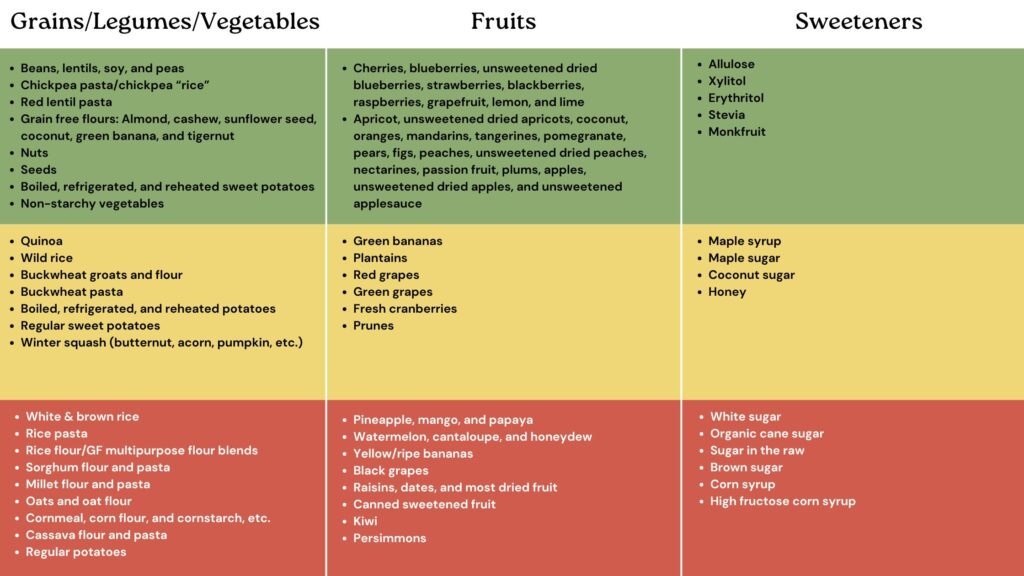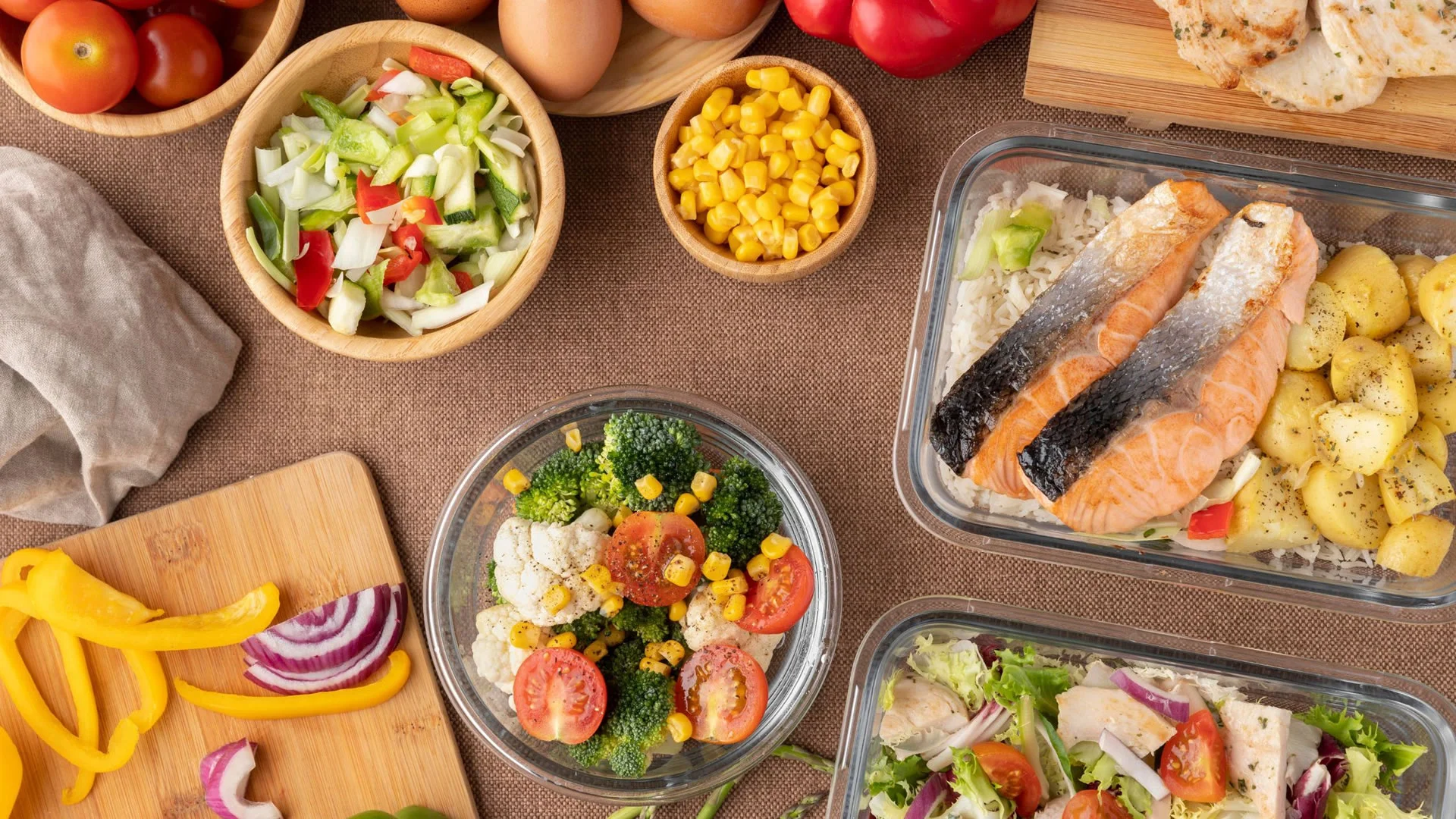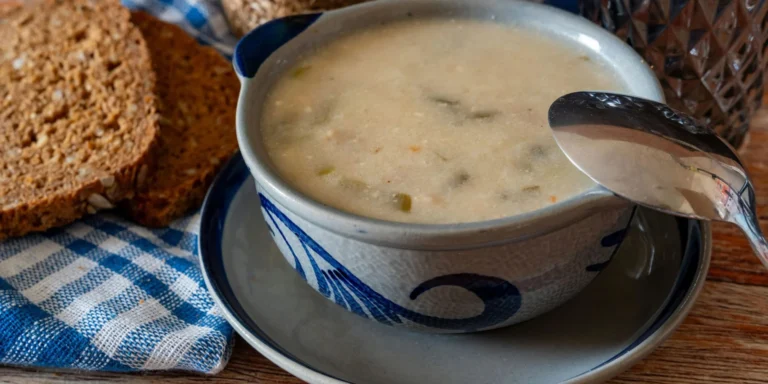Last year, I discovered a big missing piece of the puzzle regarding my health. I found out was dealing with a pretty severe case of hypoglycemia, and probably had been for at least two years, maybe longer.
This turned out to have been driving a lot of the health struggles that had been so difficult for me to make any progress on in the last several years.
Since then, I have sucessfully been able to balance my blood sugar through several specific holisitic diet strategies. As a result, my health has turned around in a way that has been absolutely life-changing. In this post, I’m going to share with you what I did, to hopefully help anyone who may be going through something similar with their blood sugar.
In August of 2024, I made an appointment with my new holistic primary care doctor for a problem I thought was unrelated to my neurological autoimmune disease, POTS, sleep problems, and weakened immune system.
Since fall of 2022, I had been experiencing symptoms of blood sugar imbalance. I started getting frequent, extreme hunger where if I didn’t eat right away, I would feel weak, lightheaded, nauseated, flulike (headache, migraine, body aches), and like I might faint. I gained 8-10 lbs in a few months before realizing something strange was going on, and these weren’t normal hunger cues.
Switching to *slightly* lower carbohydrate, higher fiber foods like chickpea pasta instead of brown rice pasta, and increasing my protein from around 50 grams a day to 70-80 grams a day helped a little. Enough to feel somewhat stable in 2023, but not enough to stop the symptoms completely.
Every time I tested my fasting blood sugar in the mornings, it was “normal” or even above optimal from a functional medicine perspective. Typically in the high 90s. This baffled me so much.
In 2024, the symptoms got worse and I gained another 5 lbs. In January and April especially, I had bouts of symptoms so severe I had to eat every 1-2 hours for several weeks at time just to be functional. These bouts would often occur after a viral illness.
Every time I would try to cut calories (even by a small deficit) to lose some weight, the symptoms would quickly get severe, and I would end up gaining weight instead of losing.
For this reason, I made an appointment with my doctor, hoping she could help me figure out what in the world was going on.
My doctor, after hearing my explanation, wanted me to have a 14-day continous glucose monitor put in and to have my A1C and postpranial (post-meal) insulin tested. The results couldn’t have shocked me more.
When I put in the 14-day continous glucose monitor, I immediately got my answer.
I was hypoglycemic ALL night long, EVERY night, and much of the day.
My blood sugar would fluctate between the 40s-60s at night while I tried to sleep and during the day if I napped, and it was dropping below 70 between meals multiple times a day as well.
The reason I had never been able to detect this before is apparently because I’m one of those people who experience a dawn phenomenon effect with my blood sugar. So in the morning after waking up was the one time of day my blood sugar was rising to a normal level, before dropping back down.
My A1c results came back quite low at 4.5%, and my postpranial insulin was very high. Ideally, it should have be under 10 uU/mL . To be normal, it should have at least been under 20. Mine was 48.
My doctor said she wasn’t sure why this was happening to me, but it’s possible my pancreas sustained some damage from COVID.
I learned that hypoglycemia can not only cause the acute symptoms we are all familiar with (frequent and ravenous hunger, weight gain, weakness, dizziness, lightheadedness, nausea, etc.), but also –
- Chronic inflammation
- A compromised immune system
- Tachycardia
- Symptoms of fight or flight, adrenaline, and anxiety
- Insomnia and sleep disturbances
I felt incredibly relieved to finally have these answers, but overwhelmed about what to do next.
So I dove in and learned as much as I could about dietary strategies for hypoglycemia, as well as anything else I could find that might help.
Many sources I read claimed hypoglycemia should not be a problem when one is consuming a diet of whole grains, plant-based protein, vegetables, fruit, nuts, seeds, and minimal added sugar.
As a whole foods plant-based vegan, I had already been eating this way for many years, yet I was still experiencing pervasive hypoglycemia, so I had to dig deeper in my research.
So how does hypoglycemia happen in the first place?
In hypoglycemia, especially reactive hypoglycemia, after eating a meal or snack that raises the blood sugar, the pancreas releases a significant amount of insulin. People with hypoglycemia are sensitive (sometimes too sensitive) to insulin, so their blood sugar drops below 70 and causes the symptoms we associate with low blood sugar.
This can turn into a vicious cycle, because to treat an acute episode of low blood sugar, one must consume fast-acting carbohydrates to quickly raise blood sugar. This then leads to further release of insulin, another episode of low blood sugar, and repeat.
There are not too many known causes of (chronic) hypoglycemia, although hormonal disorders like insulin overproduction and adrenal insufficiency can cause it. It does, however, very commonly co-occur alongside a lot of chronic illnesses and autoimmune diseases. This is especially true of reactive hypoglycemia.
Hypoglycemia can cause symptoms like extreme and frequent hunger, weight gain, lightheadedness, feeling faint, shaking, dizziness, tachycardia, headaches, chills, cold sweats, anxiety, restlessness, jitteriness, difficulty focusing, and brain fog.
It can also cause sleep disturbances and insomnia if low blood sugar is occuring during sleep.
Long term impacts on the body from chronic hypoglycemia can include significant impairing of the immune system through activation of a sustained pro-inflammatory state, brain and nerve damage, and an increased risk of heart, eye, and kidney disease.
Other types of blood sugar imbalances like insulin resistance, prediabetes, and type 2 diabetes (hyperglycemia) are different, but still share some similarities with hypoglycemia.
In insulin resistance, prediabetes, and type 2 diabetes, blood sugar will go up after eating a meal or snack. However, due to reduced insulin sensitivity or insuffient insulin production by the pancreas, the body is not able to get blood sugar back down to a healthy level afterwards. So blood glucose remains high most or all of the time, even when fasting.
Insulin resistance typically happens first, where the body loses its sensitivity to insulin. As a result, the pancreas starts producing more and more insulin to try maintain the body’s homeostasis – getting blood sugar back down to a healthy level after eating.
Eventually, without lifestyle changes, this turns into prediabetes, where the insulin resistance gets severe enough that blood sugar doesn’t go back down to a healthy level after meals no matter how much insulin the pancreas is producing. After some time, the pancreas cannot keep up and insulin production starts to decline.
Prediabetes can escalate into type 2 diabetes when fasting blood sugar is no longer slighly elevated, but significantly elevated. When sugar remains elevated in the blood due to insulin resistance or insufficient insulin production, this means sugar is not going into the cells for energy like it is supposed to.
This pattern of blood sugar imbalance can be caused by a poor diet (high in refined carbohydrates and sugar), a sedentary lifestyle, excess body fat (especially visceral fat), chronic stress, genetics, environmental toxins, and poor GI health (especially gut microbiome imbalances) – all factors that may lead to insulin resistance, oxidative stress, and damage to pancreatic beta cells.
Long term risks of diabetes include a weakened immune system, nerve damage and neuropathy (up to and including loss of limbs), eye problems (up to and including blindness), bone disease, cognitive impairment, kidney disease, heart attack, and stroke.
Both of these blood sugar problems – hypoglycemia and diabetes – can cause an array of debilitating symptoms and dramatic health consequences.
So how can you balance blood sugar? In a nutshell:
Hypoglycemia
- Ensuring meals and snacks are on the smaller side, low-moderate in carbohydrates, low in added sugar, low glycemic, high in fiber, high in protein, and high in fat to reduce how much and how quickly blood sugar goes up after eating. This helps reduce or prevent the surge of post-meal insulin that can bring blood sugar crashing back down in people with hypoglycemia. The less blood sugar goes up when you eat, the less insulin the pancreas releases to bring it back down.
- Consuming frequent meals and snacks (about every three hours) to prevent blood sugar from dipping too low between meals.
- Avoiding alcohol, which can induce a hypoglycemic state or make hypoglycemia worse.
Insulin resistance, Prediabetes, and Diabetes (Hyperglycemia)
- Ensuring meals and snacks are low-moderate in carbohydrates, low in added sugar, low glycemic, high in fiber, high in protein, and high in fat to reduce how much and how quickly blood sugar goes up after eating. The less blood sugar goes up when you eat, the less insulin the pancreas needs to release bring it back down. Eventually, dietary strategies like this can help restore insulin sensitivity in people with insulin resistance.
- Incorporating eating patterns like intermittent fasting, which has been shown to improve insulin sensitivity and in some cases, reverse the need for insulin medication.
- Incorporating certain supplements like Berberine, Bitter Melon, Resveratrol, Cinnamon, Gymnema, Fenugreek, or Prickly Pear. These have been shown to lower blood sugar and increase insulin sensitivity and production by the pancreas.
Let’s Get into the Details: My Holistic Diet Strategies for Balancing Blood Sugar
The following holistic diet strategies are the measures I took to improve and ideally reverse years of hypoglycemia.
Step 1. Add Back in Animal Products
*(If you are already eating animal products and want to try these strategies, you won’t need to do this step)
After eating a vegan diet for over five years, this was both emotionally and physically difficult for me.
I originally went vegan because if I could thrive nutritionally without contributing to animal suffering and death, I certainly wanted to do so. Based on my research, many people in modern times (depending on the country and region) can and do thrive nutritionally on a vegan diet with so many plant-based food choices and dietary supplements available.
However, I had to be honest with myself that I was nowhere near thriving, in spite of planning my vegan diet with the utmost care and having no nutritional deficiencies.
My biggest problem was that plant-based protein sources like whole grains, legumes, soy, nuts, and seeds also have significant amounts of carbohydrates – often a much greater amount of carbohydrates than protein.
In order to get enough protein, I was having to eat many more grams of carbohydrates at a time than my body could tolerate with hypoglycemia.
In order to reduce my carbohydrates down to an amount I could tolerate and still get enough protein, I knew I was going to have to add back in animal products.
I went very, very slowly, and I highly recommend taking that approach if you find yourself in a similar situation as me. Dramatic diet changes can backfire and be very hard on the body, especially for people with chronic illness and autoimmune disease.
- For week one, I tried eggs 1-2 times.
- Week two, I tried chicken broth 1-2 times in chili/soup.
- Week three, I tried a small amount of chicken breast once.
- In the following weeks, I gradually increased the amount of times I ate chicken or turkey. Anytime I consumed an animal product, I made sure I also consumed a plant-based source of protein so my body had something it was used to digesting.
- Most people would do well trying fish in the early stages. Because I am allergic to most fish, I did not. Eventually I tried tuna (the only fish I am not allergic to) and still had a histamine reaction, so I decided not to keep tuna in my diet.
- I saved beef for several months into reintroducing animal products, because it is tougher to digest.
- The final thing I tried was some low-lactose dairy. I’ve been dairy-sensitive my whole life, so I wasn’t surprised when I had an inflammatory reaction and digestive upset. This made me decide adding in dairy wasn’t worth it, so I am still dairy-free.
I made sure to finish adding back in animal products before moving on to the following steps, to make sure there would be enough variety of food in my diet after reducing carbohydrates (step 2).
Step 2. Significantly Adjust My Carbohydrate Consumption
For my next step, I adjusted the amount, portion size, and type of carbohyrates I was eating every day:
- Limit carbohydrates to 30-45 grams per meal (up to 50-55 grams max, occasionally) and 10-15 grams per snack. *Please do not copy me exactly, but take into consideration your total calorie consumption if you’d like to try this step. This adds up to about 35% of my total calories from carbohydrates.
- Be mindful of carbohydrate portion sizes, so as not to overwhelm my pancreas at meals and snacks.
- Choose low glycemic carbohydrates (or occasionally a small portion of a moderate glycemic carbohydrate). This primarily includes pseudograins like quinoa, vegetables, certain fruits, and legumes like beans, lentils, peas, and organic/non-GMO soy.
- Consume complex and high-fiber carbohydrates, and avoid refined carbohydrates (anything made with “white” flour).
- Avoid added sugar, even the naturally-derived kinds like maple syrup and coconut sugar.
- Combine complex, high-fiber, and low-glycemic carbohydrates with a source of protein and fat at meals and snacks.
Low, Medium, and High Glycemic Index Carbohydrates (Table)

Green: Low, Yellow: Medium, Red: High
Step 3. Eat a LOT of Protein
While I was getting a significant amount of protein for a vegan before, I still needed to increase my protein intake as I added back in animal products, to further stabilize my blood sugar.
Protein stabilizes blood sugar by slowing down the absorption of glucose into the bloodstream, which results in a more gradual blood sugar increase after eating. This can help prevent the spikes and crashes involved in hypoglycemia.
I aim for around 100 grams of protein a day, which breaks down to 25-30 grams per meal and 10-15 grams per snack. To do this, I include protein powder in my morning shake, as well as a source of animal protein and a source of plant-based protein at every meal and snack after breakfast.
*Again, please do not copy me exactly, but take into consideration your total calorie consumption if you’d like to try this step. This adds up to about 25% of my total calories from protein.
Step 4. Eat Smaller Meals, More Frequently
This step is more specific to hypoglycemia than blood sugar imbalances in general.
When you eat a smaller meal compared to a larger one, it causes a smaller increase in blood sugar afterwards, which in turn requires a smaller amount of insulin released by the pancreas to drive the glucose into your cells and bring blood sugar back down. Over time, this results in more stable blood sugar that doesn’t go up and down sharply throughout the day.
More frequent meals (every three hours or so), help prevent hypoglycemic episodes than can occur when you go long periods of time without eating.
Step 5. Switch from Alcohol Tinctures to Glycerites and Adjust Supplements
This final step is also more specific to hypoglycemia than blood sugar imbalances in general.
Finding out that alcohol can induce hypoglycemic episodes and make hypoglycemia worse overall came as a surprise to me.
I don’t drink alcohol recreationally, but I was taking a significant amount of the alcohol-based tincture blend I created for maintenance treatment of Lyme Disease and coinfections. About 3 Tbsp a day, which equals 1.5 oz of liquor daily given that the tinctures were made of vodka.
To remedy this, I remade all of my tinctures as herbal glycerites (post to come soon on how to make glycerites yourself!). Vegetable glycerin has a low glycemic index of 0 and thus doesn’t cause an increase or decrease in blood sugar.
Because I thought I might be experiencing insulin resistance or early prediabetes prior to getting a hypoglycemia diagnosis (due to seeing elevated blood sugar in the mornings when I would test my fasting blood sugar, which turned out to be from the dawn phenomenon effect), I was taking a couple of supplements to lower blood sugar. The worst culprit was Gymnema Sylvestre.
As soon as I found out I was hypoglycemic, I stopped taking any supplements that could lower my blood sugar and make the hypoglycemia worse.
Making all of these diet changes was overwhelming at first, to say the least. However, my effort has been 100% worthwhile because the hypoglycemia has improved so dramatically.
I am not experiencing hypoglycemia at all during the day anymore, and I’m only experiencing a couple of short dips during the night. All of my acute hypoglycemia symptoms are gone.
Not only are the numbers improving, but my health has made a 180-degree turnaround.
I am realizing this must have been an underlying root cause driving many of the health struggles I have been dealing with for so long.
- My sleep has improved so much that I have not needed my prescription medication for almost 5 months. That’s the longest I’ve gone in years! In that time I have mostly experienced a 75/25 mix of good and medium nights, with only a few rough nights (and they had a distinct cause).
- I have been exposed to dozens of contagious viruses all fall and winter long, and although sometimes I have felt like I might be fighting something viral, it never turns into anything major and my immune system successfully fights the virus. That hasn’t happened since before COVID!
- My Autoimmune Encephalitis/PANS symptoms have been so mild, I have barely noticed anything. It’s like night and day from how I felt most of 2024.
- My POTS symptoms have been so stable that I’ve even been able to dance for fun a little bit, for the first time since before COVID. I have been able to do about 30-60 seconds at a time if I’m careful to deep breathe and not jump or run, which may sound small, but I thought I would never be able to dance again for the rest of my life. I’ve also been able to double the amount of walking and seated/floor strength conditioning I do every day, which has felt so good. I can tell I am getting stronger!




